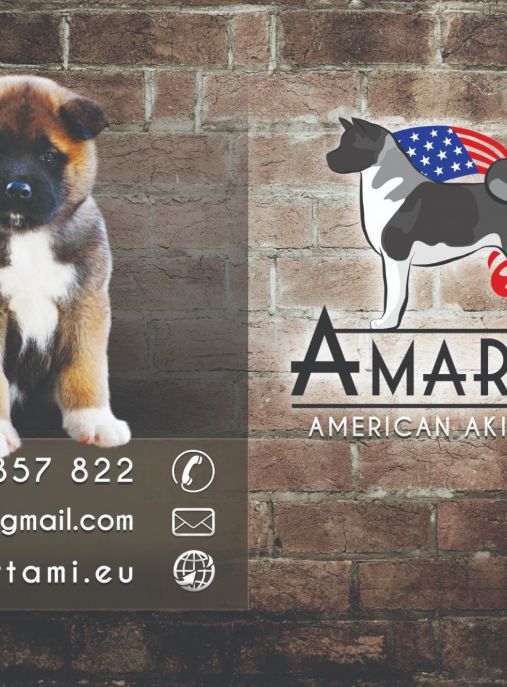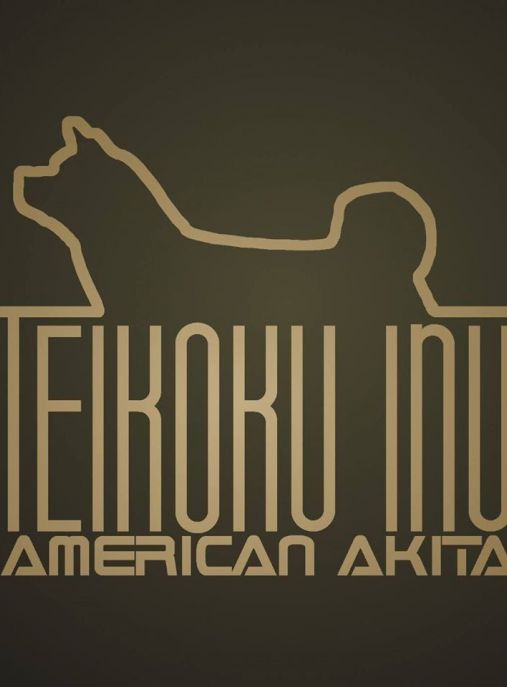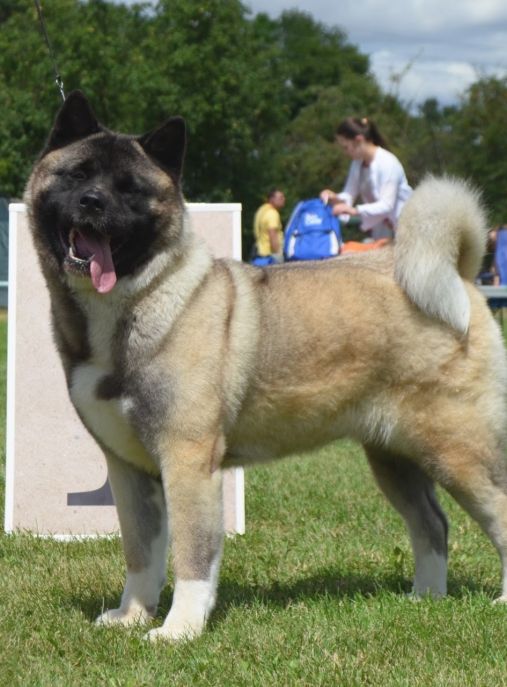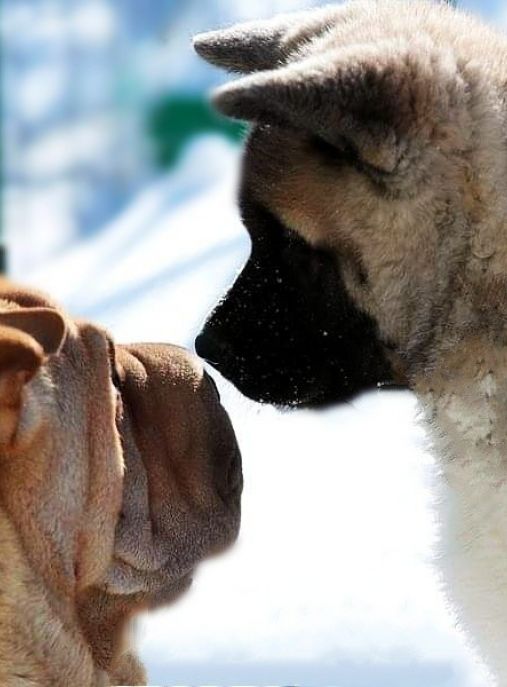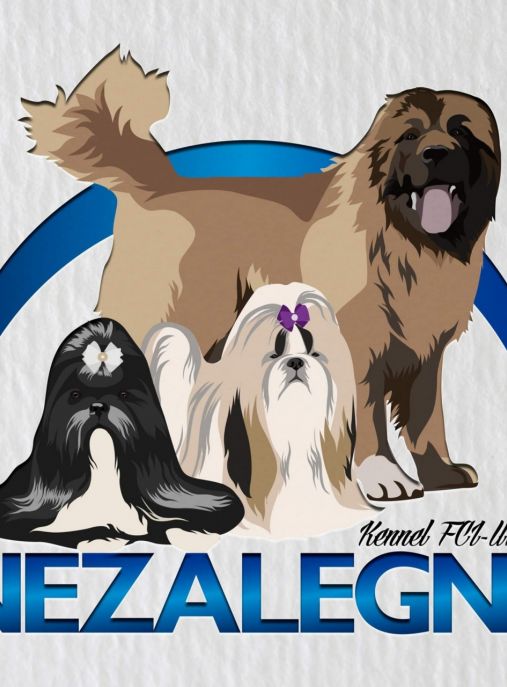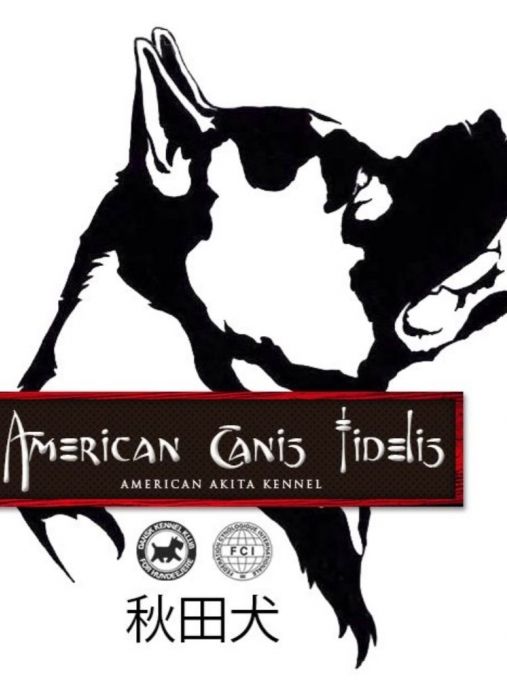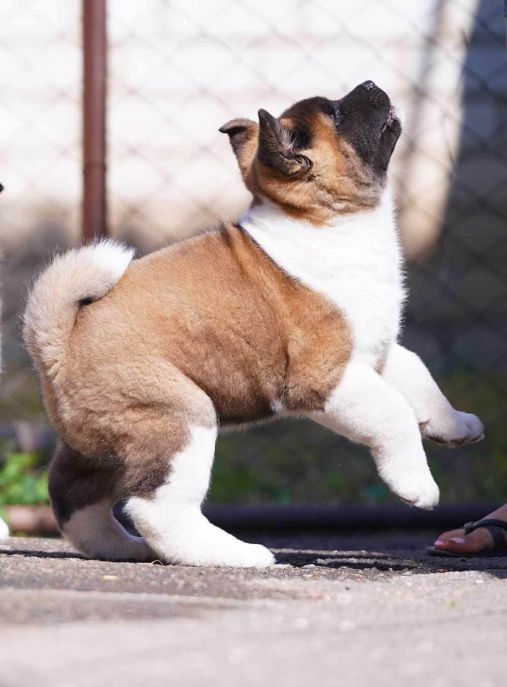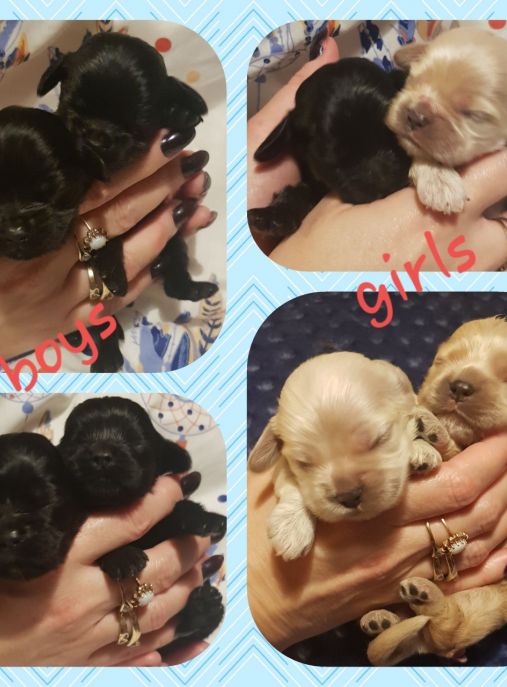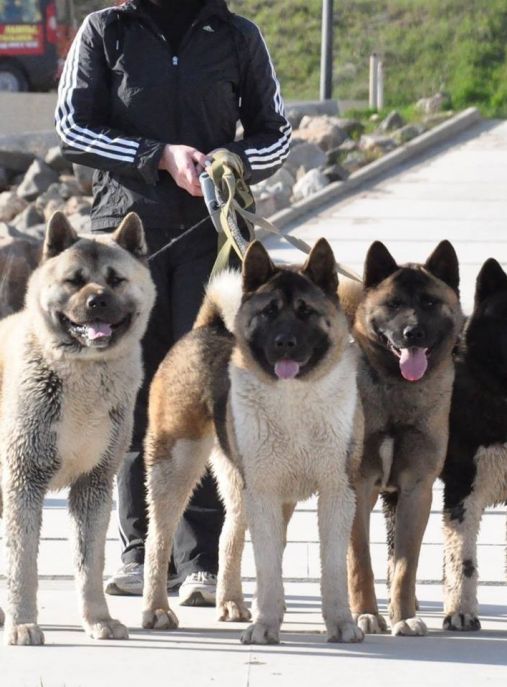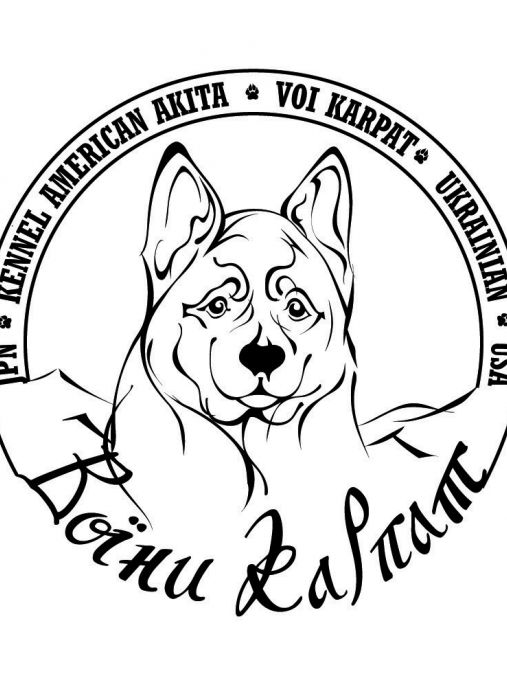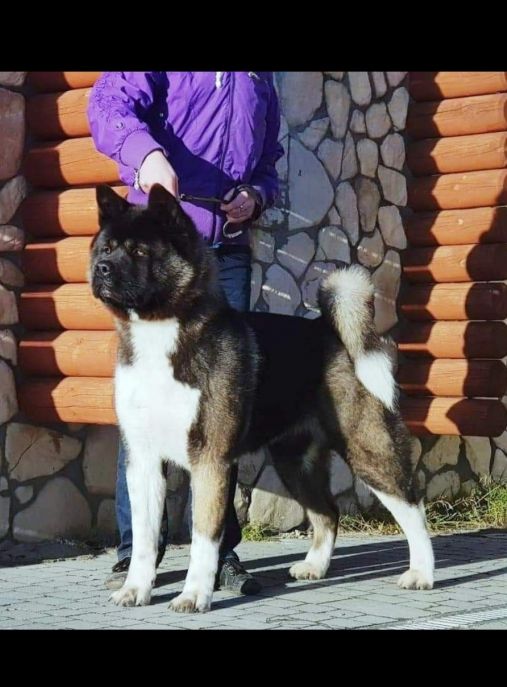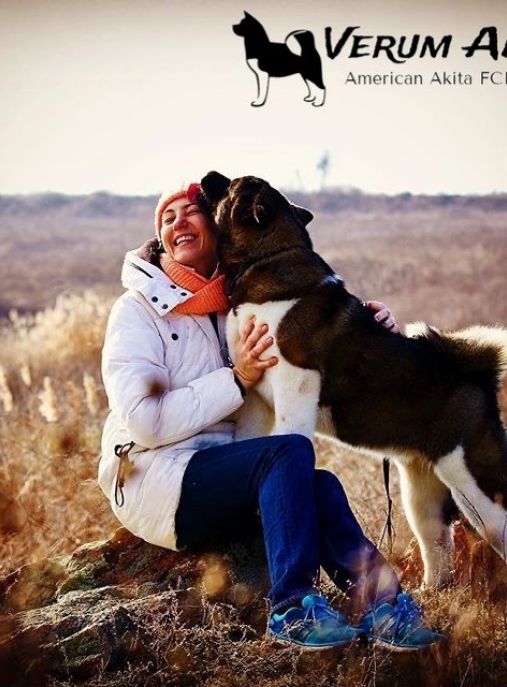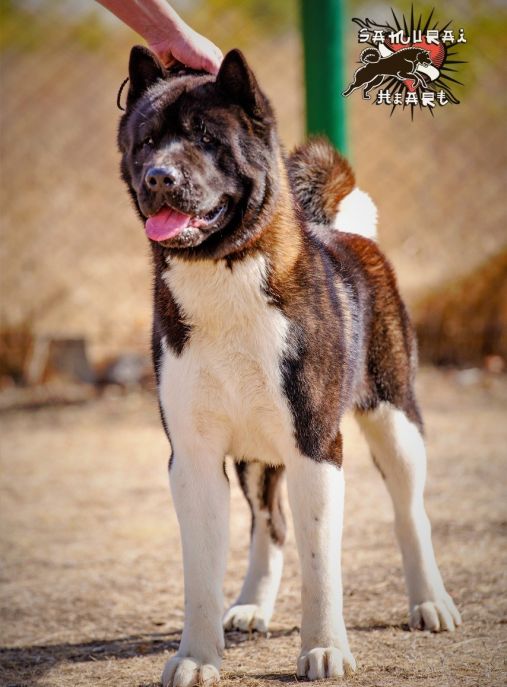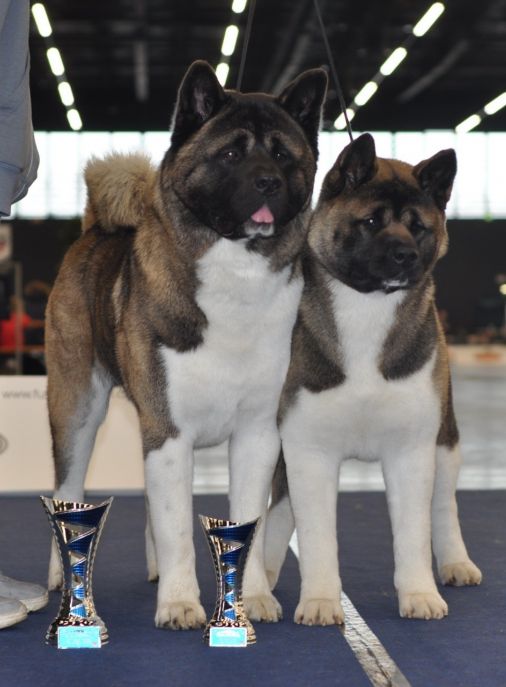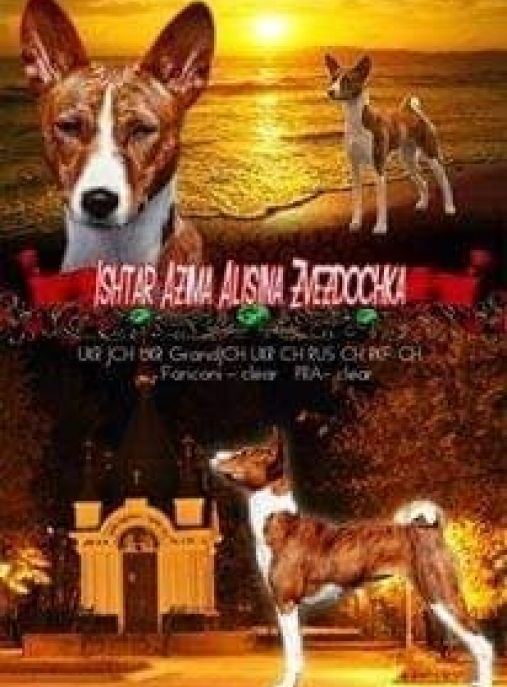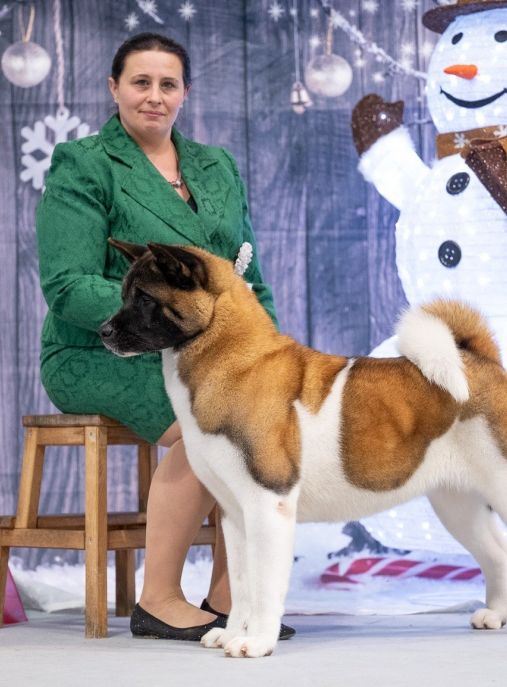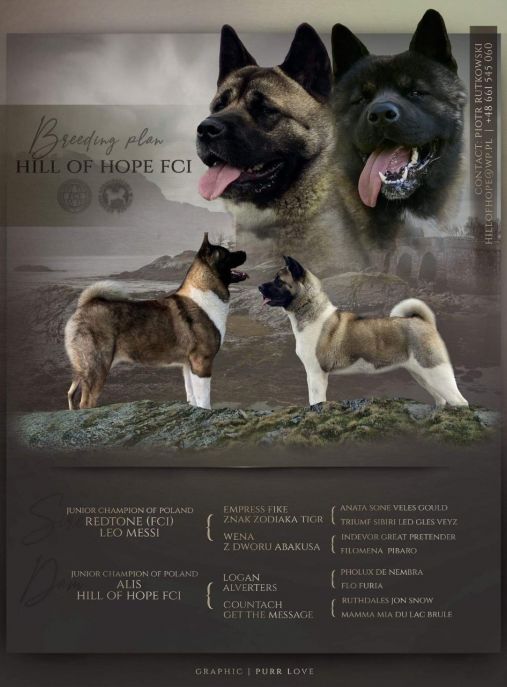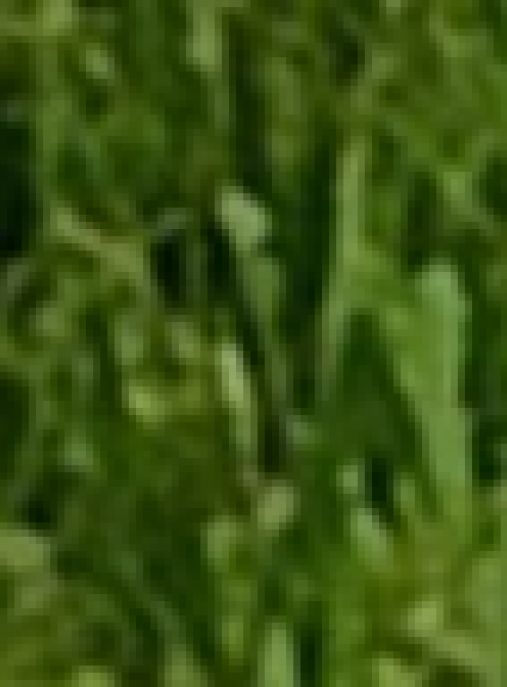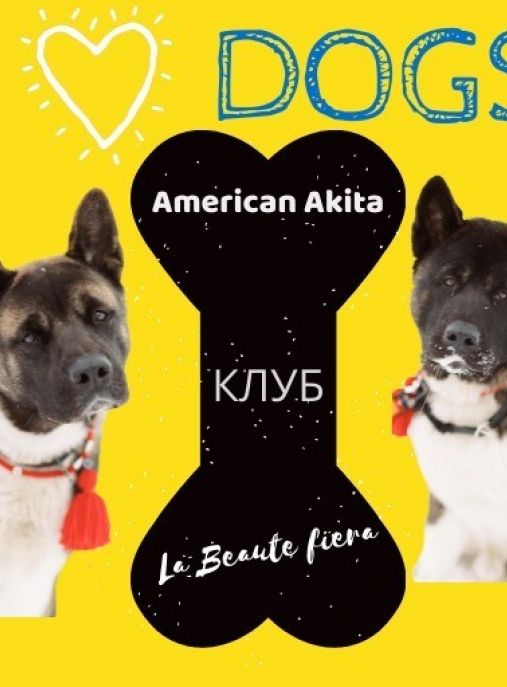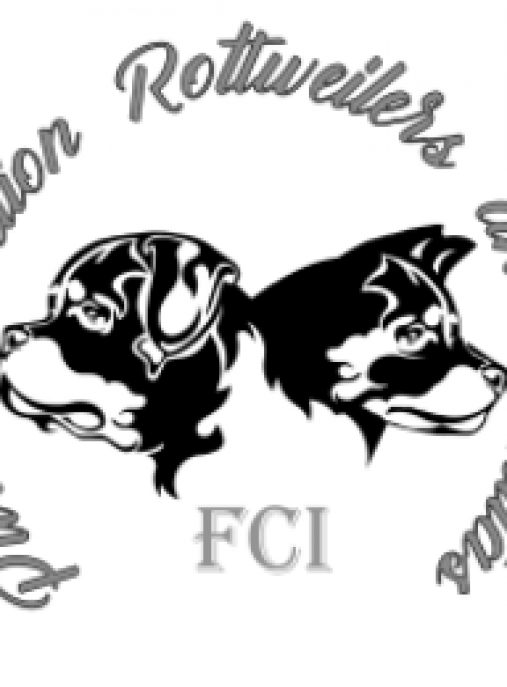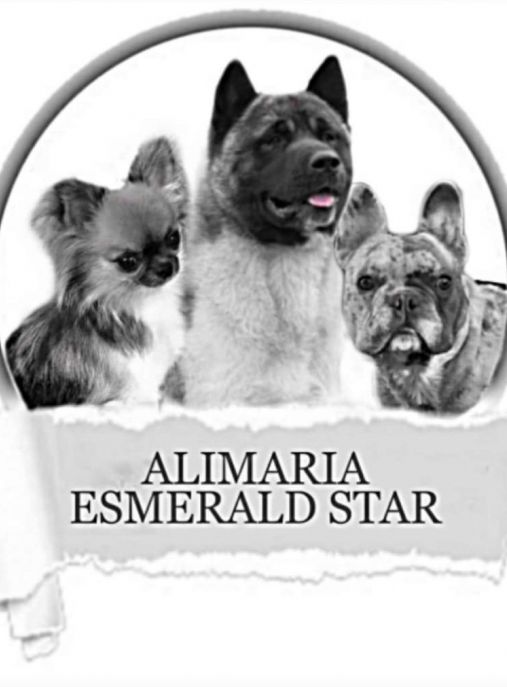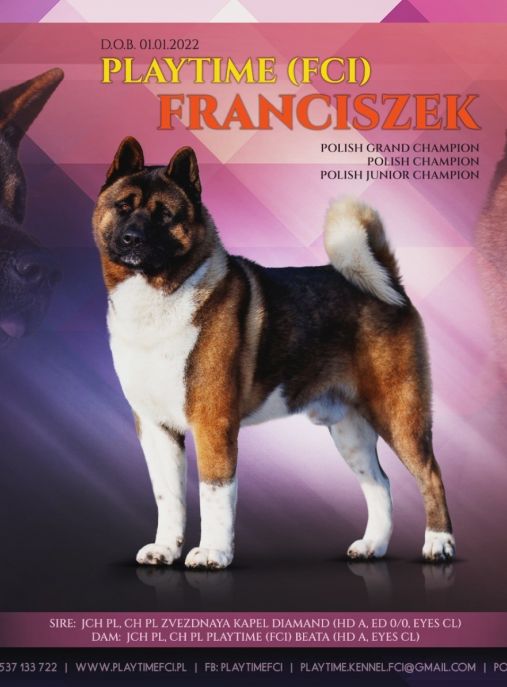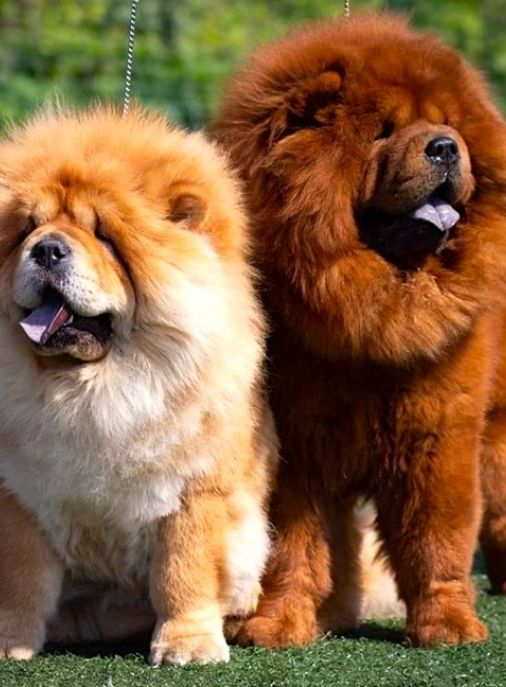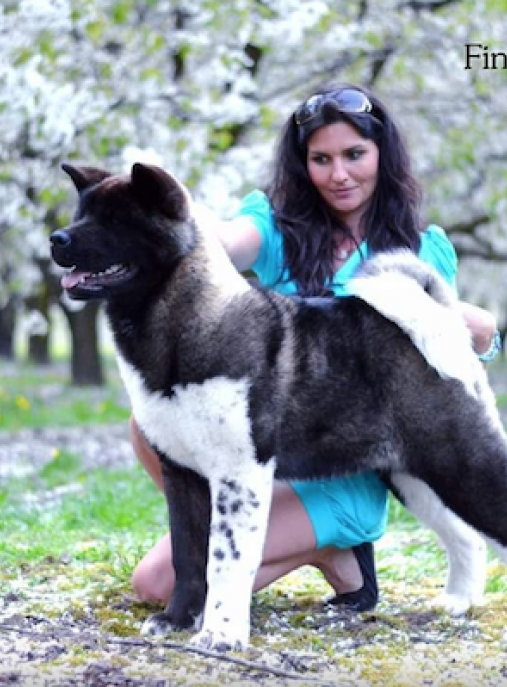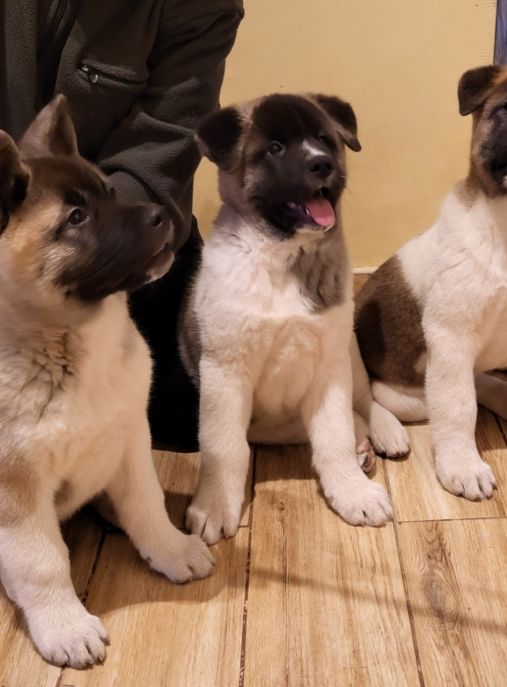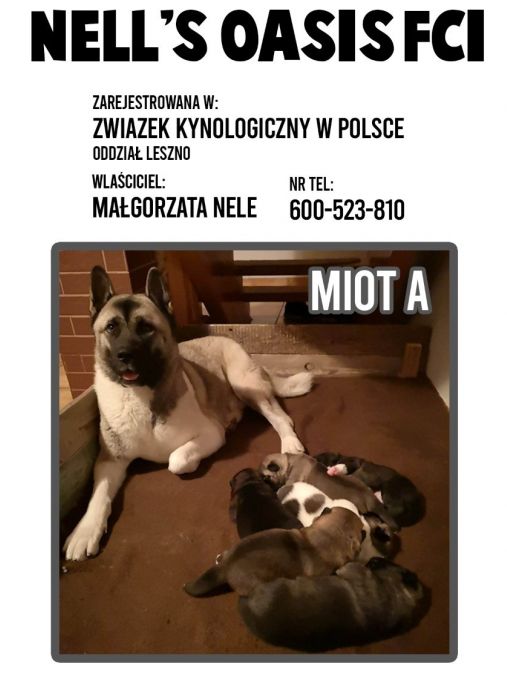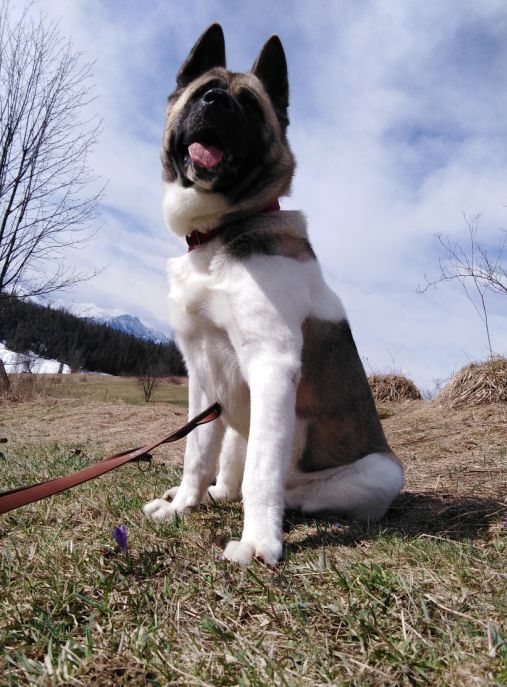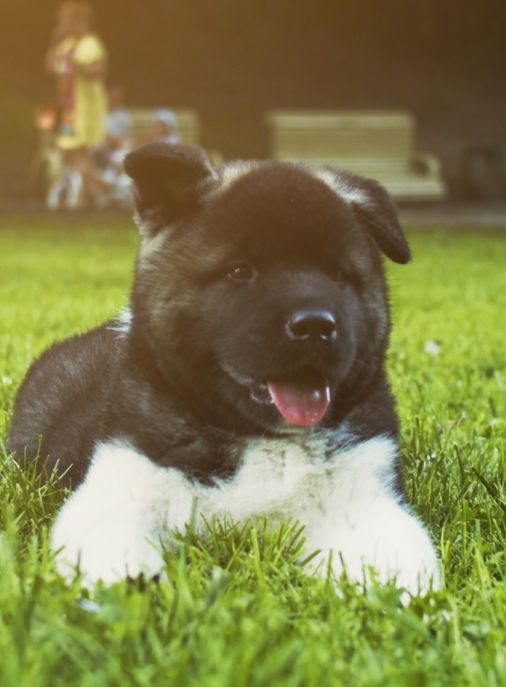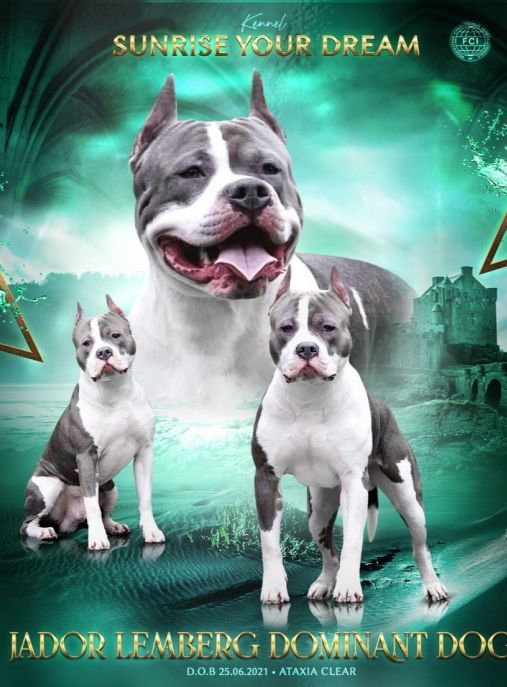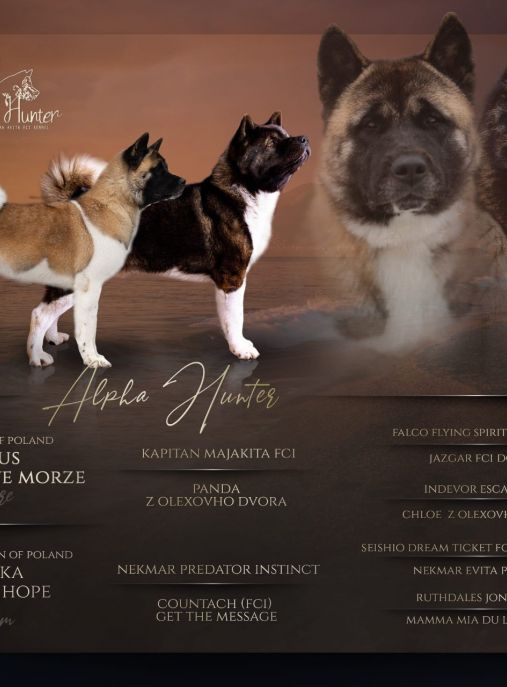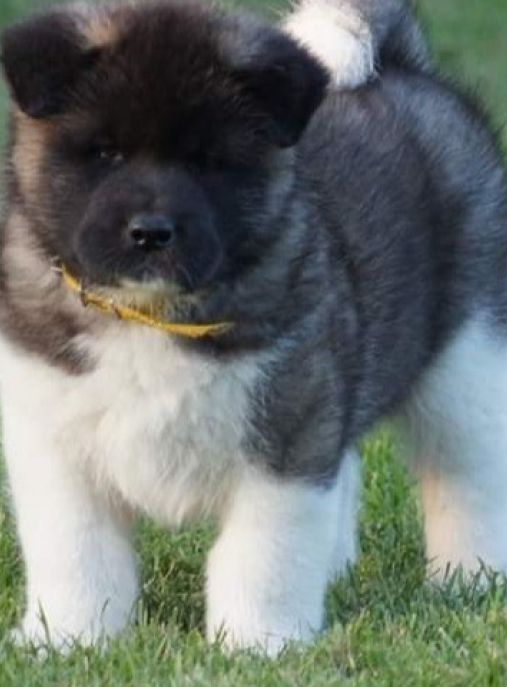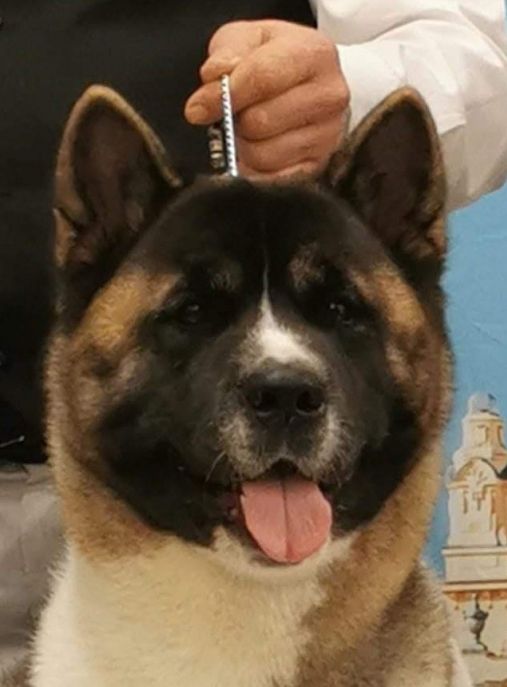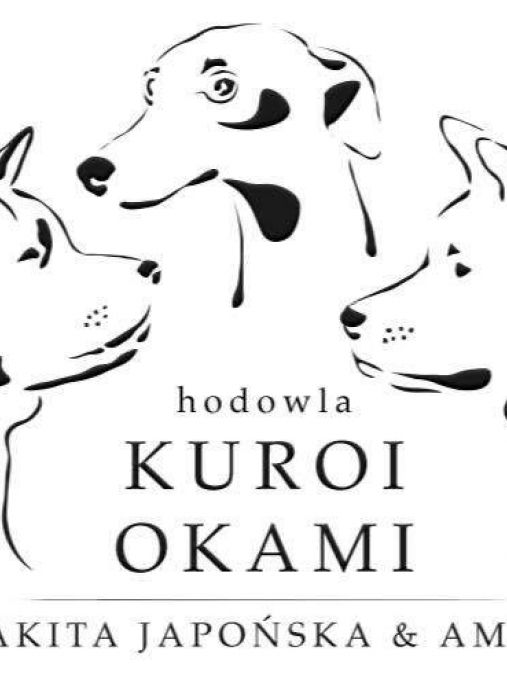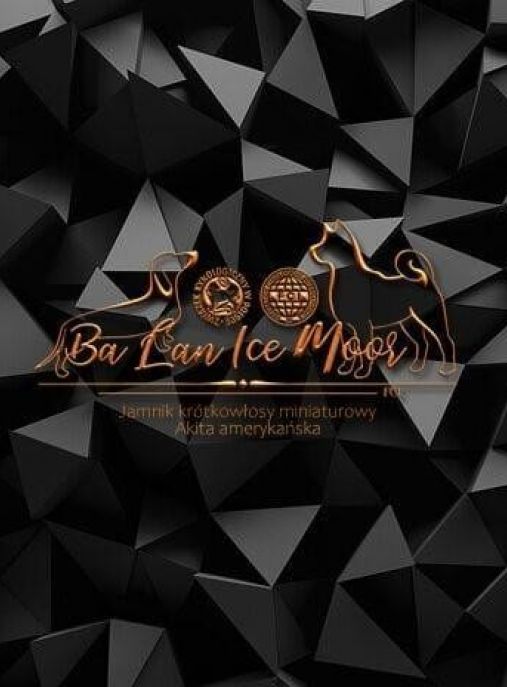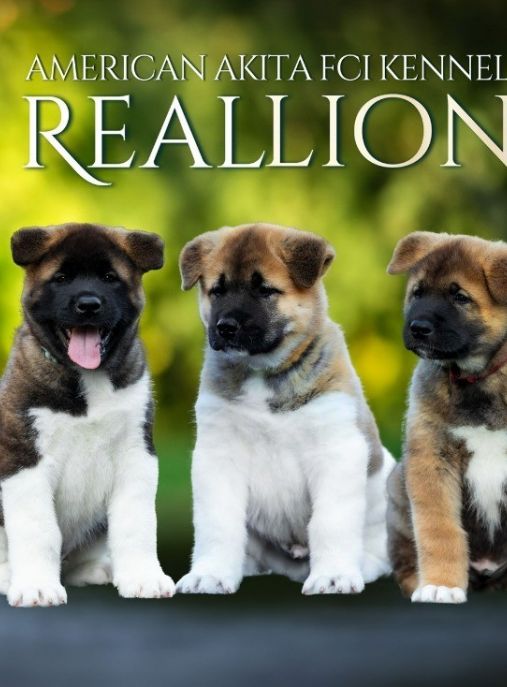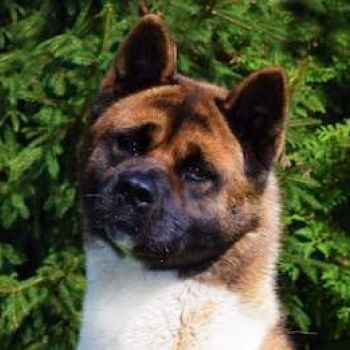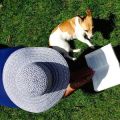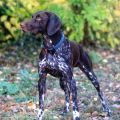The American Akita is derived from the Japanese Akita, the beginning of which dates back to the 17th century. Akita was bred as a hunting dog for deer and wild game and even bears. This exceptionally brave dog was also trained for dog fights.
Due to the demand of various countries for the leather used to sew military uniforms during World War II, the Japanese Akita was on the brink of extinction. Leather from these dogs was also used for this production.
During the breed recovery after 1945, one of the most popular breeding lines was the so-called "DEWA". Many of its representatives had an affinity with the Mastiff and the German Shepherd.
American breeders became more and more interested in these intelligent and easily adaptable dogs, which is why they brought them from Japan.
In 1956 the American Akita Club was founded. In 1972 the breed was recognized by the American Kennel Club. The conditions for breeding the American Akita were not agreed in comparison to its Japanese counterpart, so it was forbidden to bring further representatives of the Japanese Akita to the United States.
Until the end of 2005, the American Akita was referred to as the "large Japanese dog". This was due to the protests of Japanese cynologists against calling this breed Akita. As a result of breeding in isolation, the American variety of Akita developed its own characteristics that have remained unchanged since 1955.
In the FCI classification, this breed has been present as the American Akita since January 2006.
- Life expectancy: 11 - 14 years
- Height at the withers - male: 66-71 cm
- Height at the withers - female: 61 - 66 cm
The American Akita is a large and strong dog, with a harmonious build, great body weight and strong bones. It is friendly, vigilant, teachable and courageous.
The American Akita is a good hunter as well as an excellent watchdog. It is a balanced, friendly and obedient dog but it does not completely surrender to its owner. This breed is not suitable for novices and people who want their dog to be at their beck and call. Its owner should be firm, composed and patient, as the American Akita is quite independent. The best results in upbringing are ensured by consistency and ingenuity in creating new methods of teaching the dog. The American Akita quickly gets bored with repetitive activities.
This dog can be independent and dominant, especially towards other dogs of the same sex. From an early age, it should be introduced to dogs, cats and other domestic animals. Akita is a very faithful dog, devoted to its family.
American Akita does not show aggression towards children but their contacts should always take place in the company of adults because the Akita cares about the inviolability of its space. It is quiet and alert by nature, wary of strangers.
When its hunting instincts awaken, the American Akita can become dangerous. Therefore, it is important to properly use the dog's extra energy, e.g. by doing obedience exercises. Akita has a lot of talent for them.
The American Akita does not belong to the competitive breed. It would love to go for a longer walk but running after a bicycle would not be a good kind of entertainment. It is similar with cynological sports. It takes a lot of determination, gentleness and consistency on the part of the owner for the American Akita to take part in this type of sport.
The American Akita may have a tendency to run away so do not let your dog off its leash while walking. The garden should be properly secured so that the dog does not go on a lonely trip. This dog has a lively temperament and does not like inactivity but it will also accept a day without a long walk.
All colours of coat are allowed. It can be red, fawn, spotted, brindle or solid. In the case of pinto (spotted) colour, the colour should be at least 1/3 of the white surface. The colours are shiny and very clear.
The American Akita has double hair. The undercoat is thick, soft, dense and shorter than the top coat. The outer coat should be straight, coarse, stiff and slightly protruding from the body. The hair on the head, lower limbs and ears is short. The length of the hair at the withers and the rump is about 5 cm, which is slightly longer than that of the rest of the body, except for the tail, where the coat is longest and most profuse.
The American Akita requires daily brushing, but, generally, its maintenance is simple.
Twice a year, during the period of intense shedding, comb the dog with a good comb with two rows of metal teeth. The dog tolerates frosts well but not hot weather. In summer, always provide it with a quiet, shady place to rest and fresh, cold water.
The American Akita is a strong and enduring dog. Occasionally, it may have an ophthalmic condition such as a cataract, retinal atrophy or detachment. To avoid losing your dog's eyesight, have its eyes checked regularly by your vet.
There are also joint dysplasias, allergies of various grounds and flatulence.
The American Akita is not picky but, for a dog of such a large size, it eats relatively little. If your dog lives in the house and you do not keep it sufficiently active, the meals may be slightly less caloric. A good solution will be dry food which contains a large amount of meat in its composition. Dry foods are convenient to serve, well-balanced and rich in vitamins and minerals. Akita will also enjoy raw meat and raw meat bones. The Barf Diet, because we are talking about it here, has many advantages and is becoming more and more popular among dog owners. The dog receives meat that is not heat-treated, thanks to which it retains all the valuable substances such as amino acids, vitamins, fatty acids and minerals that contribute to the proper development of the dog. In this diet, however, do not forget about vegetables and fruits, thanks to which the dog receives fiber and a small amount of good carbohydrates. Before you implement this diet, it is worth expanding your knowledge about it.
